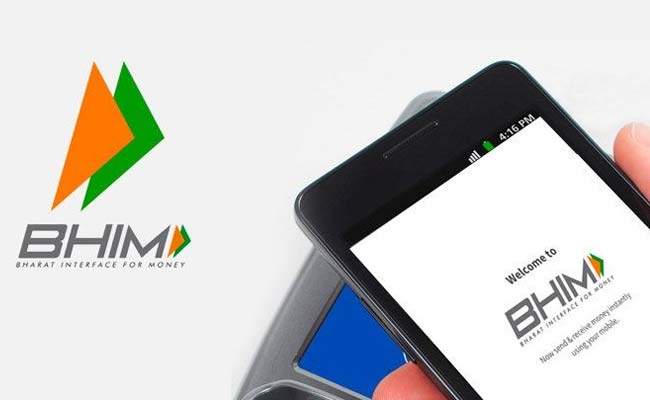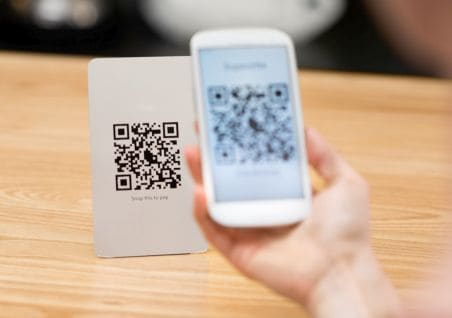- Cashless Bano India/
- Features/
- All You Need To Know About The Government's BHIM App
All You Need To Know About The Government's BHIM App

New Delhi: The BHIM (Bharat Interface for Money) App was launched by Prime Minister Narendra Modi amid much hype at the Digi Dhan Mela on December 30, 2016. The launch came nearly two months after the government's Demonetisation move wiped out 86 per cent of the cash in circulation and shifted the spotlight to digital payment systems--something the government has been trying to promote. The app, according to NITI Aayog CEO Amitabh Kant, has seen 23 million downloads in a short span of five months; something he believes is an indicator that India is moving towards digital payments.
The app can be downloaded for free on both Android and iOS devices and is available in 13 languages. Here are some of the other things you should know about the app.
How To Set It Up
Once the App has been downloaded on your phone, the steps to set everything up are quite simple. Here is what you will need to do:
- Select your preferred language
- Enter your phone number. This must be linked to your bank account. The App will verify this number via SMS
- Set up a 4 digit numeric passcode. This will be required to use the app each time it is launched. (If a user enters this password wrong thrice, the payment gateway will be blocked)
- Select your bank
- Set up your UPI (United Payments Interface) PIN. This requires you to punch in the last 6 digits of your debit card and its expiry date
- Set up your Virtual Payment Address (This ensures that your real bank account/debit card details will not be compromised)
The details of multiple bank accounts can be stored and used through the BHIM App
How Does The App Work?
- BHIM is a UPI-based application which bundles banking services together in a single app. So what is UPI?
United Payments Interface (UPI) is the system which enables this integration of multiple banking features into one app. The system was launched by the National Payments Corporation of India in April 2016 to facilitate inter-bank transfers. It allows anyone with a bank account to send and receive money from their smartphones either through any bank's UPI app, this does not even have to be the account or the BHIM App.
- It also makes transactions faster since it stores one's bank account details and only asks for a Virtual Payment Address.
What All Can Be Done Through BHIM?
- One can check their bank balance, send and receive money and send payment requests through the BHIM App.
- Payments can be sent and received using QR codes (unique codes which can be scanned by a smartphone), a Virtual Payment Address or by entering the bank account number and the branch's IFSC code. This means that payments can be sent to anyone regardless of whether or not they are on the BHIM app.
- The payments are done through the United Payment Interface (UPI) which allows all transactions to be instantaneous, 24x7.
- Additionally, payments can be made to those whose banks are not a part of the UPI system by using their bank account number and branch's IFSC code.
What Precautions Should Be Taken?
The BHIM App is considered to be pretty safe since it demands a passcode every time one opens the app and works through a Virtual Payment Address or QR Code. Additionally, the app also allows people to set up biometric passcodes by comparing the fingerprints of the user to those stored in the Aadhaar database. This, of course, is only possible in smartphones equipped with fingerprint scanners.
However, the National Payments Corporation of India which developed the app does warn users to not accept unknown payment requests.
Since only one's mobile number is required to send payment requests, it is easy for unknown and dubious requests to slip in.
Are There Any Transaction Costs?
No. None of the transactions made through the BHIM App are charged. In fact, the government is currently offering cashback offers for merchants who use the app and users who refer the app to others.
Is There A Cap On The Transaction Amount?
Individual transactions are currently capped at Rs 10,000 while transactions worth a maximum of Rs 20,000 are permitted per day.
The app can be downloaded for free on both Android and iOS devices and is available in 13 languages. Here are some of the other things you should know about the app.
How To Set It Up
Once the App has been downloaded on your phone, the steps to set everything up are quite simple. Here is what you will need to do:
- Select your preferred language
- Enter your phone number. This must be linked to your bank account. The App will verify this number via SMS
- Set up a 4 digit numeric passcode. This will be required to use the app each time it is launched. (If a user enters this password wrong thrice, the payment gateway will be blocked)
- Select your bank
- Set up your UPI (United Payments Interface) PIN. This requires you to punch in the last 6 digits of your debit card and its expiry date
- Set up your Virtual Payment Address (This ensures that your real bank account/debit card details will not be compromised)
The details of multiple bank accounts can be stored and used through the BHIM App
How Does The App Work?
- BHIM is a UPI-based application which bundles banking services together in a single app. So what is UPI?
United Payments Interface (UPI) is the system which enables this integration of multiple banking features into one app. The system was launched by the National Payments Corporation of India in April 2016 to facilitate inter-bank transfers. It allows anyone with a bank account to send and receive money from their smartphones either through any bank's UPI app, this does not even have to be the account or the BHIM App.
- It also makes transactions faster since it stores one's bank account details and only asks for a Virtual Payment Address.
What All Can Be Done Through BHIM?
- One can check their bank balance, send and receive money and send payment requests through the BHIM App.
- Payments can be sent and received using QR codes (unique codes which can be scanned by a smartphone), a Virtual Payment Address or by entering the bank account number and the branch's IFSC code. This means that payments can be sent to anyone regardless of whether or not they are on the BHIM app.
- The payments are done through the United Payment Interface (UPI) which allows all transactions to be instantaneous, 24x7.
- Additionally, payments can be made to those whose banks are not a part of the UPI system by using their bank account number and branch's IFSC code.
What Precautions Should Be Taken?
The BHIM App is considered to be pretty safe since it demands a passcode every time one opens the app and works through a Virtual Payment Address or QR Code. Additionally, the app also allows people to set up biometric passcodes by comparing the fingerprints of the user to those stored in the Aadhaar database. This, of course, is only possible in smartphones equipped with fingerprint scanners.
However, the National Payments Corporation of India which developed the app does warn users to not accept unknown payment requests.
Since only one's mobile number is required to send payment requests, it is easy for unknown and dubious requests to slip in.
Are There Any Transaction Costs?
No. None of the transactions made through the BHIM App are charged. In fact, the government is currently offering cashback offers for merchants who use the app and users who refer the app to others.
Is There A Cap On The Transaction Amount?
Individual transactions are currently capped at Rs 10,000 while transactions worth a maximum of Rs 20,000 are permitted per day.
Published: May 30, 2017 12:18 IST
About The Campaign

NDTV along with MasterCard is launching a multi-platform campaign “Cashless Bano India”, to create digital awareness and educate the masses about digital payment solutions for day to day transactions.
The campaign aims to take the message of a cash free India to the country, all while educating them on the ways and means to do it.
We aim to reach out to people and educate them on:
1). Digital and financial literacy
2). New generation digital payment solutions
3). Enabling merchants and consumers to understand and adopt secured and safe payment Solutions
4). Ease of usage at point of sales
Comments


